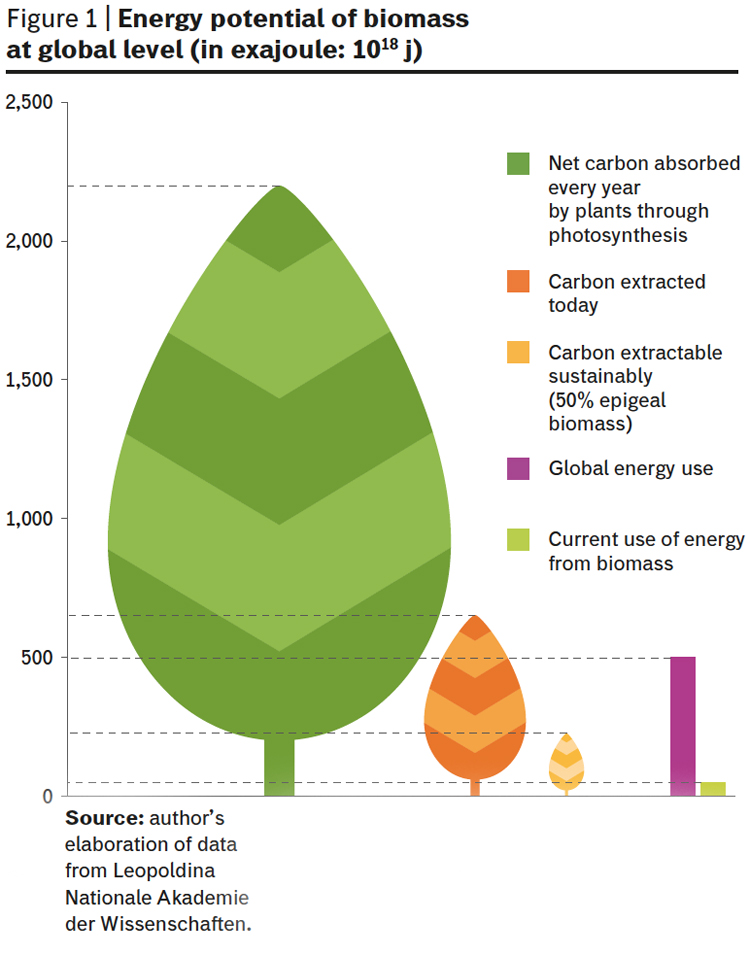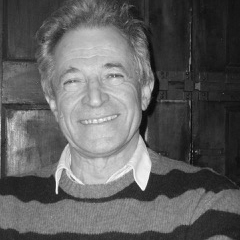“I will plant, says he, in the desert, cedars, hawthorns, myrtles,
olives, firs, elms and boxes.” Therefore, if you wish to own plenty
of these trees, and if you yearn to be numbered amongst them,
whoever you might be, endeavour to enter the peace of solitude...
And so you will be a Cedar for the nobility of your honesty and dignity;
a Hawthorn for the urge to correct and convert; a Myrtle for the quiet
sobriety and temperance; an Olive for the fecundity of deeds of happiness,
peace and mercy; a Fir for deep meditation and wisdom; an Elm for your
patience and support; a Box because of your acquaintance with humility
and perseverance.
Excerpt from Liber eremiticae regulae aditae a Rodulpho eximio doctore.
Arezzo Library, cod. 333, XI cent.
Translated into English from the translation by Padre Salvatore Frigerio – SLM –
Sopra il Livello del Mare, n. 11, 2003
The Rule of the Camaldolese monks, which generated the first forest code in history, refers us back to the extraordinary variety of senses and functions of the main material the bioeconomy is dealing with: the vegetable kingdom. Today, western societies are rediscovering its importance in their own way.
“In the long run, fossil fuels will no longer be available cheaply and biomass will be the main source of carbon for the global economy.”
This is how the Bio-based Economy was announced in the words of a EU Commission official. Here, the vegetable kingdom boils down to an abstract and shapeless resource, biomass, largely available on the planet, to be exploited as energy source and raw material.
Of course, Camaldolese monks and Franciscan friars used forests for economic purposes, but in a much more complex relationship, combining useful, spiritual, poetical and beautiful aspects. Forests were a cosmos, or its mediator. The often-narrow views of politics and business, which ultimately is our everyday language, adumbrate a potential for opportunities but also of risks.
Despite being more secular than St. Romuald, founder of the Camaldoli order, to fully embrace the bioeconomy, we cannot ignore the plurality of functions the vegetable kingdom performs for our lives. We could not even do away with the surprise, the poetry and respect for a blooming tree. We could not forgo more equitable economies and a relationship with disposable resources. If we reduce everything to biomass, we are fighting a losing battle.
 |
|
Guercino, San Romuald, 1640-41, city art gallery, Ravenna
|
An Extraordinary Ecological and Economic Challenge
In a nutshell, bioeconomy means that bio-based renewables will be driving the economy in the next few decades, phasing out oil and other fossil substances, employing resources from plants, animals, algae and sea organisms, but also mushrooms, bacteria, yeasts as well as the biodegradable fraction of industrial and urban waste.
Exploiting bio-based raw materials and waste as the baseline for tomorrow’s products represents a new extraordinary and ecological challenge.
Bio-based raw materials offer three advantages: they are potentially inexhaustible, generally less polluting and toxic than their fossil counterparts and can be produced locally, thus guaranteeing more political and energy autonomy.
The driving force behind such development is green chemistry, or the design of products and processes to extract high-added-value substances from biomass. The biological domain offers a wealth of molecules and compounds much wider than that offered by oil-derived hydrocarbons. From the so-called metabolites, or the molecules produced by plant metabolism, through sophisticated building and breakdown systems. Some are common to all living beings: proteins, carbohydrates, lipids and nucleic acids. These are primary metabolites, obtained through glucose breakdown, which represents the main source of energy for cells, which plants build by themselves through photosynthesis. But plants also produce an extraordinary variety of other specialized molecules – secondary metabolites, also known as active principles – strictly interconnected with the environment. Molecules such as terpenoids, alkaloids and polyphenols, glycosides and so on that plants use to attract, repel, neutralize, recover and for other functions. Secondary metabolites are thousands of different molecules constantly evolving. We only know the main properties of many of them. In the hemp plant, for instance, 480 chemical compounds have been identified.
Green chemistry can obtain an enormous variety of products from this vast set of molecules. And also energy raw materials: liquid, solid and gaseous biofuels.
Becoming More Efficient is not Enough
The bioeconomy’s prospects are thus very promising. I would like to stress the fact that, in this challenge, agriculture should regain its role as primary mover for development, in that it is the main source of such biological resources.
But when we look at the source, we realize that soil is a limited resource. How to reconcile returning to agriculture as a source of primary goods with a population growth expected to reach 9 billion people and ever increasing protein consumption? Are the Earth ecosystems able to meet such growing expectations without suffering irreversible alterations? Human pressure on ecosystems has now reached its tipping point. Well, in many instances it has exceeded that limit, as Johan Rockström amongst others, warned us.
Such a challenge implies an efficiency leap in matter and energy flows, so as to reduce to a minimum the use of natural resources and waste production.
But becoming more efficient is not enough. This challenge cannot be tackled with technology alone and cannot be won only from a production perspective, but first and foremost from a consumption viewpoint, namely the lifestyles of people and urban communities.
Dealing with Entropy
The onset of the bioeconomy demands also a revisitation of economics theoretical principles and of its relation with the physical world. The basic principles of a thought able to reconcile economy and ecology are to be found in the writings of the economist that first coined the term “bioeconomy”: Nicholas Georgescu Roegen. A statistician and mathematician as well as an economist, he was defined by Paul Samuelson “The Economist of the Economists”, even though unlike Samuelson, he was never awarded a Nobel Prize. Perhaps because he deviated from the dominant schools of thought. Georgescu Roegen declared the failure of the neoclassical economic theory focused on the principle of immediate utility: utilitarianism has always seen natural resources as free of charge.
The elementary notion that most 20th century economists overlooked is that economics is linked first and foremost to flows of energy and matter. According to Georgescu Roegen, economists are two centuries behind in the scientific knowledge, still clinging to Laplace mechanism where every process, including the economic cycle, is perfectly reproducible.
But in the physical world, the second law of thermodynamics is in force: the processes of energy conversion are not reversible. In other words, nothing can go back to what it was before. This is true both for a romance and a lump of coal. The entropy law not only regulates the evolution of the universe, but also our energy and industrial production. If, existentially speaking, entropy conjures up the ineluctability of degradation, from an economic point of view the notion of entropy is linked to the concept of serviceability.
This is the problem looming ahead: it is not about the amount of energy we have on the planet that is important, but rather how much of it is serviceable.
New-Generation Biofuels on the Horizon
The problem of energy production is also central in the bioeconomy. Currently at global level, one of the main forces driving biorefineries’ development is plant-based fuels – especially ethanol and biodiesel – similarly to petrol for the petrochemical industry.
It is true that we have high expectations of third-generation biofuels – those obtained from microalgae – the fourth generation is in sight – biofuels from artificial photosynthesis, experimented for the first time in the 1990’s by the Lawrence Berkeley National Laboratory in California, under the supervision of Steven Chu, Nobel Prize for Physics.
Combining sunlight, non-potable water, waste CO2 from industrial activity and genetically modified blue-green algae it is possible to produce solar diesel and ethanol using up very little soil and water resources.
But so far not even a litre of solar or 4G biofuel has been sold.
While waiting for the promises of the 4G biofuels, this dependence on energy production can become a limit, confusing the energy sector needs with those of the chemical industry. From an energy consumption point of view, it is misleading to think that the huge body of agricultural and forest residues, instead of dedicated crops such as maize and sugar cane, can solve the supply problem.
The German Academy of Sciences, Leopoldina, carried out some calculations. From figure 1, we can see that the biomass that can be used sustainably, that is without reducing or jeopardizing the Earth’s vegetation cover, can satisfy the global energy requirements (2010 data). This would be the case if we absurdly gave up all other uses. We currently exploit just one third of this potential, mainly for non-energy purposes: food and fodder (over 90%), building materials and green chemistry. Even if we used all the potential shown in the figure, food consumption will greatly expand due to the world’s population increase and changes in the global food habits. So, even in the coming decades, biomass will satisfy about 10% of global energy consumption (rapidly increasing), albeit through second-generation biofuels instead of firewood.

The (Different) Case of Plastic Materials
The plastic materials and lubricants panorama is completely different, just to mention two chemical industry sectors with the highest productions at global level. It has been estimated that 96% of all goods manufactured in the USA contains at least one chemical product. Even if it has invaded all aspects of our lives, at global level, plastic production is responsible for less that 4% of the total annual consumption of oil. We are talking about two orders of magnitude less.
In short, if the main goal is to produce fuels, this involves very high production levels and plants’ sizes that are unlikely to be compatible with local resources such as those of most European regions. For this type of plants, raw materials are normally imported from different continents according to market prices.
Energy production can often become a dependent variable of other productions. For example, the new Matrica biorefinery in Porto Torres is designed to produce first of all biopolymers, biolubricant bases, extender oils for tyres and bioherbicides. This plant also envisages energy production, but from residual biomass that cannot be exploited in other high-added-value uses, so the final process has been designed taking into account the residues of the biomass it uses.
This reversal of priorities between energy uses and other uses (food, feedstuff, materials, chemical intermediates) is crucial for the development of a bioeconomy based on locally integrated biorefineries, flexible technological systems using a variety of specific resources produced and available locally, to manufacture a wide range of bio-based products. This approach is essential especially in countries with little land such as Italy and Europe in general.
A locally integrated biorefinery has several potential advantages.
- Normally, it uses small and medium size plants, never oversized compared to the availability of local resources. In this way, it is able to offer better guarantees of traceability and sustainability of the raw materials used.
- It can guarantee better wealth distribution in the area where it operates and the active involvement of local farmers, something nearly impossible to achieve with a big delocalized biofuel plant. It is thus able to get better social approval.
- Since its production is linked to local characteristics, it is not easily exportable to areas where labour and approval are cheaper than in the local area.
This model of biorefinery, unlike that based exclusively on energy production, can be a niche but able to generate high added value thanks to environmental qualities of bioproducts that can be obtained.
Biorefineries Start in the Fields
But a biorefinery is not just an industrial plant. As long as vegetable biomass is the primary source of the bioeconomy, the sustainability of the agricultural phase will play a crucial role in the entire chain. Excessive pressure on ecosystems or excessive use of mechanized cultivation and chemical inputs in agriculture are the first signs of a low sustainability chain or worse still of its loss of soil fertility.
Biorefineries start in the fields and they can only start in the fields if they want to guarantee quality raw materials and supply chain, not only from an energy but also from an environmental and social point of view. It is unthinkable that the bioeconomy carries on with the traditional separation between a farmer producer of undifferentiated low-cost raw materials and an industrial processor who buys seeds and fibre where prices are the lowest.
Better still, biorefineries start with the plant itself. This opens up a huge field of research and innovation. We are used to exploiting hundreds of millions of hectares of fertile soil for monoculture using just a small part of the plant (for example wheat’s caryopsis). We still do not know how to use the huge wealth of substances and molecules that a plant can offer. Even the so-called dedicated crops that we disregard because they conjure up images vast expanses of maize to produce only fuels, in reality could have multiple food and non-food uses. Why should a farmer grow hemp just to sell its straw without exploiting its seeds for their nutritional value? Why should thistle be seen only as a non-food crop (according to some it steals soil to food production) when its residual oilcake could be an excellent supplement for local animal farming, taking the place of GMO soy imports?
An economic thought that sees scarcity as the long run goal cannot forgo ecology. This is the crucial role of the bioeconomy. In this way we will then be able to discover the real sense of the economic activity, as Georgescu Roegen suggested, “the real output of the economic process is not the material flow of waste, but the immaterial flux of the enjoyment of life.”
Top image: Highly-detailed margin by Jean Bourdichon, from Les Grandes Heures d’Anne de Bretagne, c. 1503-1508


